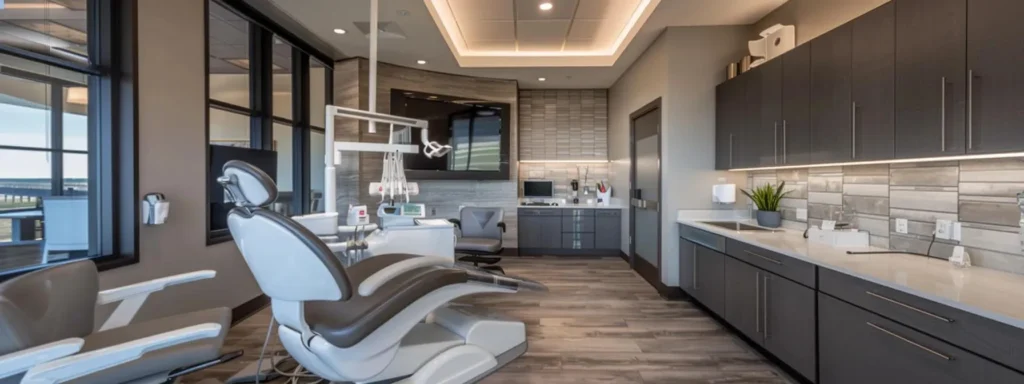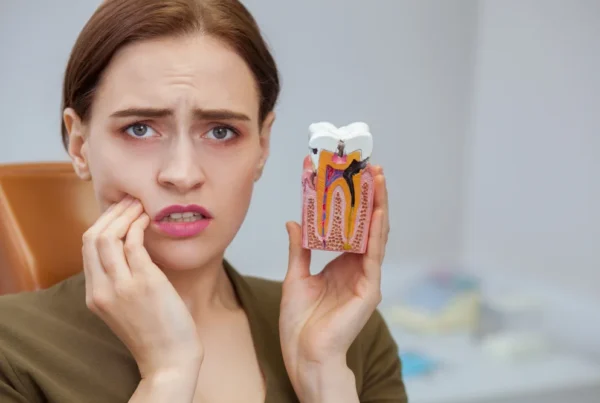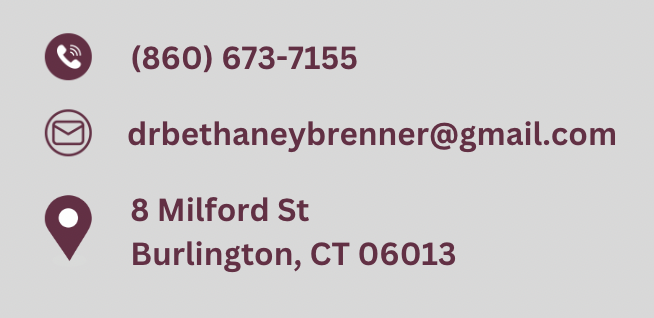Effective management of dental injuries depends on how quickly you respond. The sooner care is given, the higher the chances are for successful treatment and minimal long term damage. The type of trauma determines how urgent your response needs to be. A knocked-out tooth, for example, might survive if put back within a limited time frame, typically less than an hour. This emphasizes the need for not only quick but also informed action. Patients and caregivers should understand basic dental first aid to react properly.
Even seemingly minor injuries need prompt attention. A small chip or fracture, if left alone, can lead to severe pain, infection, or further damage over time. Immediate consultation with a dental professional can help prevent these secondary problems.
In incidents of dental trauma, the delayed onset of symptoms can be misleading. Swelling, bruising, or tooth discoloration might not appear immediately, suggesting a false sense of security. Early professional intervention can help identify and treat less visible damage that may otherwise go unnoticed until complications arise.
Understanding Different Types of Dental Injuries
To properly manage dental emergencies, you must first recognize the different types of dental trauma, ranging from small chips to complete tooth loss. Each kind of injury requires a unique approach to immediate care and later professional treatment.
Minor dental traumas, such as chips or small fractures, may seem unimportant but can affect a tooth’s strength and long-term health. Immediate measures like rinsing with salt water and avoiding further pressure on the tooth can prevent the damage from getting worse, while timely dental advice can provide proper repair options.
Moderate injuries, such as larger fractures or cracked teeth, demand more immediate attention. These injuries can expose the inner layers of the tooth, leading to pain and risk of infection. Quick application of cold packs to reduce swelling and visiting a dentist as soon as possible is advised for such cases.
Understanding the severity levels helps you respond appropriately to different dental emergencies:
- Minor Injuries: Small chips or cracks that may not cause immediate pain but need professional evaluation to prevent complications
- Moderate Injuries: Larger fractures that expose inner tooth layers and cause significant pain or sensitivity
- Severe Trauma: Complete tooth loss, major fractures, or injuries involving multiple teeth requiring emergency care
- Hidden Damage: Internal injuries that may not be immediately visible but can cause problems later without proper treatment
In cases of severe dental trauma, such as tooth loss where the tooth is completely knocked out, time is critical. The tooth should be held by the crown, gently rinsed without scrubbing the root, and attempts can be made to put it back into the socket.
Essential First Aid Steps for Dental Injuries
How effectively you respond to dental emergencies directly impacts the success of recovery. Immediate and proper first aid reduces further damage and can set the stage for complete restoration.
For minor injuries like chips or cracks, the affected area should be cleaned gently with warm water, and any bleeding can be managed with pressure using a piece of gauze. If pain and swelling are present, applying a cold compress helps reduce discomfort and inflammation. It’s also advisable to avoid eating on the injured tooth and to seek dental care urgently.
More significant injuries such as larger fractures require protecting the tooth’s remaining structure. The patient should rinse with a salt water solution to clear any debris and apply a cold compress to the cheek to decrease swelling. Pain relief should be sought with over-the-counter medications as advised by a dental professional.
In the case of knocked-out teeth, extreme care is necessary to increase the likelihood of successful replacement. The tooth should be picked up by the crown, gently rinsed with milk or salt water without touching the root, and if possible, placed back into the socket and held in place during transport to the dentist. If not possible, the tooth should be kept in milk or a tooth preservation product to maintain its viability.
Why Professional Assessment Is Always Necessary
The relationship between pain and the seriousness of dental trauma is not always direct, making it crucial to have dental injuries evaluated by professionals. A dentist’s expertise and access to the necessary diagnostic tools enable thorough examination and appropriate treatment, even for damages that might go unnoticed by the patient.
Dental professionals can identify subtle signs of trauma that untrained individuals might miss. For instance, a crack that’s invisible to the naked eye but detectable with dental X-rays could lead to significant issues if left untreated. A dentist will also be able to recommend immediate treatments, such as stabilizing a loose tooth, which can be critical in preserving dental health.
Dentists can prevent future complications following an injury. Even without immediate discomfort, trauma can cause problems over time, such as tooth death or an increased risk of infection. Consulting a dentist as soon as possible after an incident ensures that preventive measures, such as protective coverings or antibiotics, are taken to prevent further damage.
Treatment Approaches for Different Injury Types
Appropriate management of different dental injuries is essential for optimal recovery, and this requires understanding the specific protocols for each injury type. The right treatment approach can greatly influence the restoration outcomes and long-term dental health of the patient.
For minor dental injuries such as chips or cracks, management usually involves smoothing rough edges or applying dental fillings or crowns. Such treatments restore the tooth’s appearance and function while preventing further damage or decay. They are relatively simple procedures that can usually be completed in one or two dental visits.
When dealing with more serious injuries, like severe fractures that reach the tooth’s pulp, root canal treatment may be necessary. This treatment removes damaged pulp, relieves pain, and saves the tooth structure:
- Minor Chip Repair: Smoothing edges or applying small fillings to restore tooth shape and prevent further damage
- Crown Restoration: Covering damaged teeth with protective crowns to restore strength and appearance
- Root Canal Treatment: Removing infected or damaged pulp while preserving the natural tooth structure
- Emergency Stabilization: Immediate measures to secure loose teeth and prevent further displacement
In the case of complete tooth loss, where a tooth has been completely knocked out, time-sensitive replacement is critical. If the tooth can be placed back into the socket within the hour, the chances for successful reintegration are high.

Recognizing When You Need Emergency Care
Accurate self assessment following a dental trauma is vital for determining the need for professional care. Some injuries may require immediate emergency dental services to prevent long-term damage.
One key indicator that demands urgent attention is the intensity of pain. If the discomfort is sharp and persistent, it could point to nerve damage or exposure, situations that require prompt care to relieve pain and prevent infection. Should a patient find over-the-counter medications insufficient to manage the discomfort, it’s a clear sign that professional care is necessary.
Visible and significant damage to teeth or gums is another sign that a dentist’s intervention is needed. Examples include large fractures, displacement of teeth, or tears in the gums. Such damage often requires complex restorative treatments that only a dental professional can perform correctly and safely.
Uncontrollable bleeding from the mouth following an injury indicates a potentially serious issue that requires immediate medical or dental intervention. Light bleeding can usually be managed with pressure, but if bleeding continues despite first aid efforts, professional assessment is critical to rule out serious underlying complications.
Accessing Emergency Dental Care
For residents in need of emergency dental care, having access to prompt professional assistance is crucial during dental crises. Quick response and expert guidance can make the difference between saving and losing a tooth.
Quick response to patients’ emergency needs is a primary aspect of quality emergency care. For example, upon encountering an accidental tooth loss, individuals should contact their dental office for immediate recommendations on preserving the tooth, thus enhancing the possibility of successful replacement.
Online resources can supplement emergency response, allowing patients to access critical information on handling various dental emergencies from home, such as detailed steps to manage severe tooth pain or control bleeding after trauma. This information not only helps in reducing pain but also in preventing the situation from getting worse.
Emergency contact networks ensure that professional help is within reach, even during off-hours. When faced with a dental emergency outside of normal business hours, patients should have access to contact details that connect them directly with dental professionals who can guide them through the necessary steps or arrange for urgent care.
Preventing Dental Injuries Before They Happen
Proactive prevention is key to reducing the likelihood and severity of dental trauma. By taking straightforward protective steps, individuals can significantly minimize their risk of experiencing dental injuries.
One effective preventive measure is the use of protective gear during high-risk activities, such as sports. Wearing a mouthguard when engaging in contact sports or any activity that could result in a blow to the face helps shield the teeth from forceful impacts, potentially preventing chips, fractures, or tooth loss.
Another step involves consciously avoiding using teeth as tools. Many injuries occur from habits such as chewing ice, biting fingernails, or opening packaging with teeth. Learning about the dangers of these practices can help stop their occurrence and protect the teeth from unnecessary stress and damage.
Awareness and preparedness can also vastly improve response to a dental emergency. Teaching individuals basic first aid for dental trauma ensures that, in the event of an injury, immediate and appropriate action is taken, which can be instrumental in preserving the affected tooth or teeth until professional care can be obtained.
Taking Control of Your Dental Emergency Preparedness
A key to maintaining oral health in the face of dental trauma is a basic understanding of injury management coupled with prompt access to professional care. This dual approach empowers individuals with the confidence to handle unexpected dental emergencies effectively.
At Dynamic Family Dentistry, we understand that dental emergencies can happen at any time and require immediate attention. Our experienced team is prepared to handle all types of dental trauma, from minor chips to complete tooth loss, with the urgency and expertise these situations demand.
Don’t let a dental emergency compromise your long-term oral health. Contact Dynamic Family Dentistry immediately if you experience any dental trauma. Our emergency dental services are designed to provide the prompt, professional care you need to save your teeth and ensure the best possible recovery outcomes.
Book Your Consultation Today!
Dr. Bethaney B. Brenner DMD
8 Milford St, Burlington, CT 06013
Frequently Asked Questions
What should I do immediately after a dental accident?
After a dental injury, it’s important to stay calm and act quickly. If a tooth is chipped or knocked out, rinse your mouth and the tooth piece with warm water and keep it moist. For bleeding, apply gentle pressure with gauze. Then, seek professional dental help immediately.
Can a knocked-out tooth be saved?
Yes, a knocked-out tooth can often be saved if you act promptly. Handle the tooth by the crown, rinse it without scrubbing the root, and try to reinsert it into the socket. If that’s not possible, keep the tooth moist in milk and get to a dentist within 30 minutes to an hour.
How can I prevent dental injuries?
Preventing dental injuries involves wearing mouthguards during sports, avoiding using your teeth as tools, and being mindful of foods that can cause damage. Educate yourself on dental first aid and visit your dentist regularly for check-ups and personalized advice.
Related Articles





